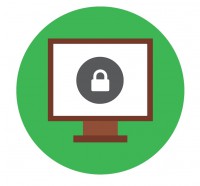Category: General
In recent years there has been mounting investigation from the Centers for Medicare & Medicaid Services and state governments for potential fraud within healthcare providers across all sectors. Commercial payers are increasing their own audits and overpayment demands. The Office of Civil Rights, as the watch dog of HIPAA compliance, is increasingly on guard against security breaches. And then there are the organizations’ own stakeholders. Business metrics (such as revenue protection and reputation) are huge drivers of compliance priorities.
Compliance officers have to answer to both internal and external forces and it can be a lot to handle.

According to the 2017 Healthcare Compliance Benchmark Study by SAI Global, 59% of respondents expect compliance budgets to remain the same or shrink. Increasing demands and decreasing resources is the exact equation that should turn all providers toward technology. The right tools enable best practices, improve accuracy, strengthen cash flow, and ensure compliance. Technology that improves productivity is essential to help healthcare providers do more with less.
The best way to ensure a return on your compliance software investment is to take advantage of tools that play dual roles: mitigate risk and also assist with day-to-day operations. While compliance-focused software has its place, your compliance technology journey should begin by taking a look at what software is available to do double duty. Look for applications that help mitigate risk and respond to denials and audits while also supporting your mission and daily activities.
There are several advantages:
Compliance by nature can't happen in a silo. It touches and involves all departments. Getting everyone on the same technological platform to begin with not only helps to ensure compliance upfront, but it eases the process of responding to audits and denials on the back end.
Our blog post on the Top Tools to Enable Compliance details six technologies that help improve operational productivity while contributing to securing compliance.

To learn more or request a demonstration of what Medforce software can do for you fill in this form or call our sales department at:
Even our demos let you preview without leaving your desk. View the power of Medforce right from the comfort of your office.